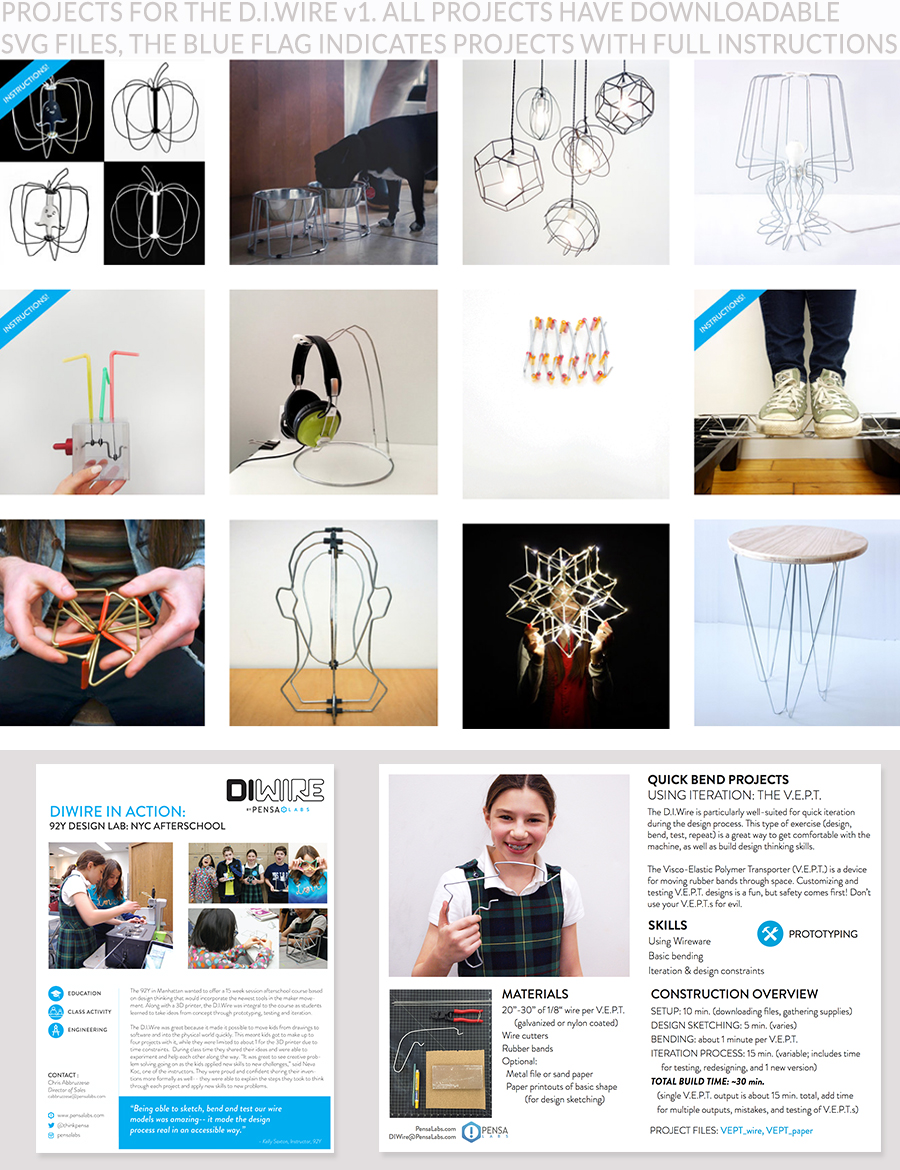
Design Research
User research and design research, production management

User research has always Been an intrinsic part of my work. I am a natural observer of behaviors, and I am always looking for ways to discover motivations behind them. Every project I take on starts with a research phase, whether it's on the fly or built into a strict timeline.

Multiphase User Research:
Educational Market for the D.I.Wire v1
Company: Pensa (for D.I.Wire)
The largest market for the D.I.Wire v1 was education, so in order for sales and support to address that diverse group more effectively, I completed in-depth research that included interviews, field studies, competitive product analysis, and focus groups.
The goal was to characterize the needs of users across the academic spectrum and determine the appropriate types of materials that would lead to successful adoption of the D.I.Wire as a part of a tool set for learning digital fabrication.

Process & Product
Timeline: Distributed over 3 months
Roles: I was lead researcher, Lisa Lehman (design) advised, secondary research support provided by Oscar Frias (mechanical engineer), recruiting support from Chris Abbruzzese (sales).
Methodologies:
Ethnographic research
Field Work: site visits and workshops
Surveys for targeted user groups
Qualitative information synthesis
I actively engaged customers in research as part of our design efforts. Primary research included interviews done in person and remotely, and site visits across the country provided contextual information that added depth to the data.


Who Are Our Users?
I recruited participants from early-adopting customers. We weighted the groups that we determined were the largest target segments.

Distilling User Personas
By synthesizing the information gleaned from interviews and site visits, I was able to communicate to the executive team what the priorities should be for content development, as well as future R&D.
As the main point of contact with customers, I was able to continuously add to our understanding of our users. This kept our team's user-centered perspective as we rolled out both new software and a larger, more capable product, the D.I.Wire Pro.

The secondary research was done in parallel to the primary research. By analyzing content offered by 35 different products within the STEAM education space, I was able to evaluate subjects, formats, and scopes that would be most relevant to our target segments.

Secondary Research
The qualitative review system I created used six factors for evaluation. I chose the set of programs to represent the range of resources that would be relevant to our users.
User Skill Level
Teacher Skills Required
Scope of Project
Student Age Range
Materials Provided
Topics Covered

Along with our team, I planned and produced a new round of content that included projects with instructions, videos for on-boarding and marketing for the launch of the D.I.Wire Pro. I created a pilot program to test the projects in a lower ed setting. if the projects worked with them, they would work for the rest of our users.

Prototyping: Finding the Sweet Spot
Developing resources meant designing projects, building them, documenting that process, then writing and testing the efficacy of the instructional sets in real-life contexts.
I balanced the need to deliver deep technical information with the desire to minimize cognitive load, while providing genuinely interesting ways to learn about using the software and machine.

The research fed into ongoing improvement of support resources for each target segment, and the insights I collected were used by the company leadership to steer the development of the D.I.Wire Pro. The structures created for support became guides for development of resources for the new software, including manuals and marketing videos.

Interested in seeing more?
